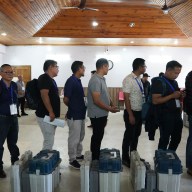Next week, Phil Fontaine, National Chief of the Assembly of First Nations (AFN), will step down and his successor will be elected. The well-respected and charismatic leader has had many moral and material victories, including the settlement of claims arising out of the 150-year residential school tragedy.
Less well-known, perhaps, is his success in advancing an integrated approach to economic and social development with a clear message: “First Nations want to be active participants in Canada’s economy.”
His message is gaining traction with the private sector and government.
About four per cent of the Canadian population is Aboriginal, but it is the youngest and fastest growing segment and expected to account for 25 per cent of new workers by 2020. Currently, levels of literacy and educational attainment among Aboriginal people are lower than for average Canadians, a gap costing billions of dollars annually.
Investments that close this gap will save money and ensure Canada has a globally competitive workforce.
But there is good news as well — self-employment among Aboriginal people has more than doubled in the last two decades and Aboriginal businesses created with support from Aboriginal financial institutions have doubled the average success rate (58 per cent versus 33 percent). While many are small scale, there are little known, multimillion-dollar companies and success stories in virtually every sector.
Fontaine has persistently pushed for an integrated approach to economic development, attracting an impressive range of industry partners.
The AFN Corporate Challenge connects First Nation and corporate communities around partnerships, investments, procurement, and employment. Recently, a $50-million fund to promote Aboriginal business and entrepreneurship — Capital for Aboriginal Prosperity and Entrepreneurship (CAPE) Fund Management Inc. — has attracted top corporate executives because it provides social as well as financial returns.
Last month, Indian and Northern Affairs Canada announced a new federal framework on Aboriginal Economic Development highlighting success stories and proposing an integrated approach. However, the language that targets those who are “already well positioned” and “already investment ready” suggests it could help the “rich get richer” and leave the rest behind.
Given the immense disparities remaining in Aboriginal communities, and needs for investments in education, basic and advanced infrastructure, no one size fits all. Building local capacity to design local programs to respond to economic priorities is fundamental.
While there is no shortage of politics or competing interests, the opportunity is immense, as is the cost of failure.
Doing the right thing, however, is seldom the easy thing to do.
















